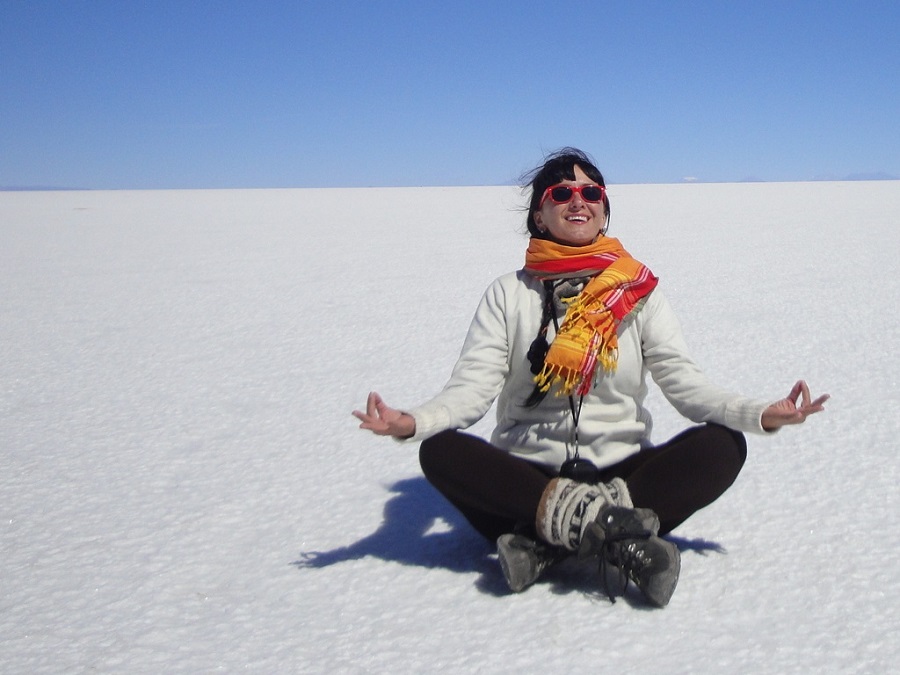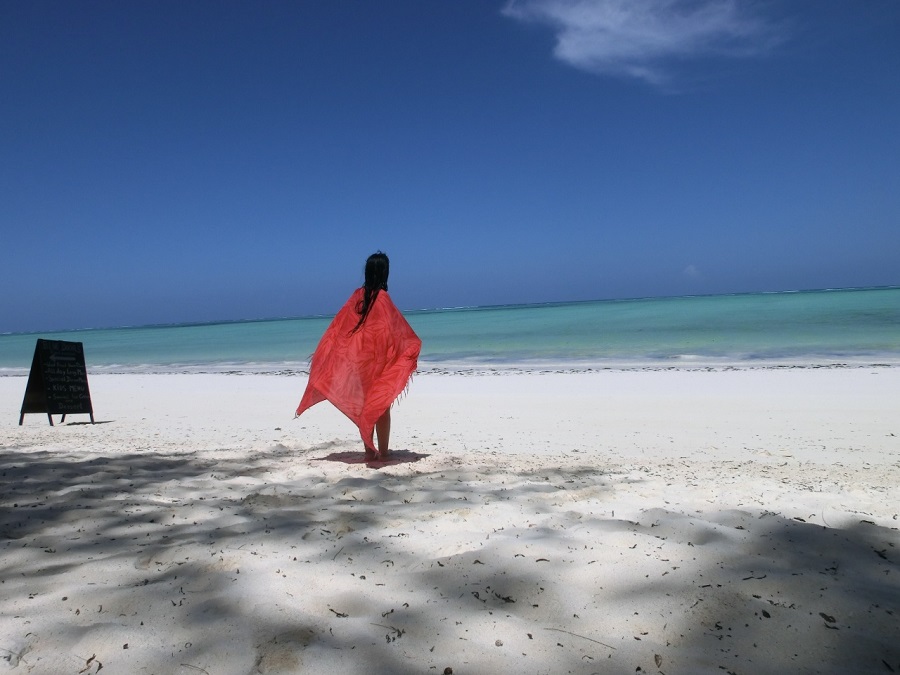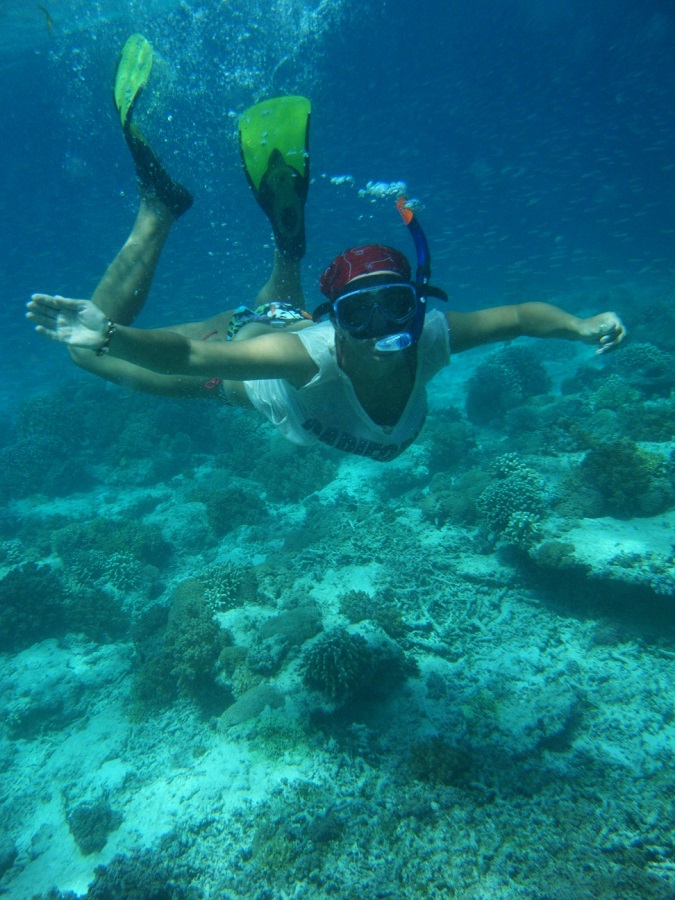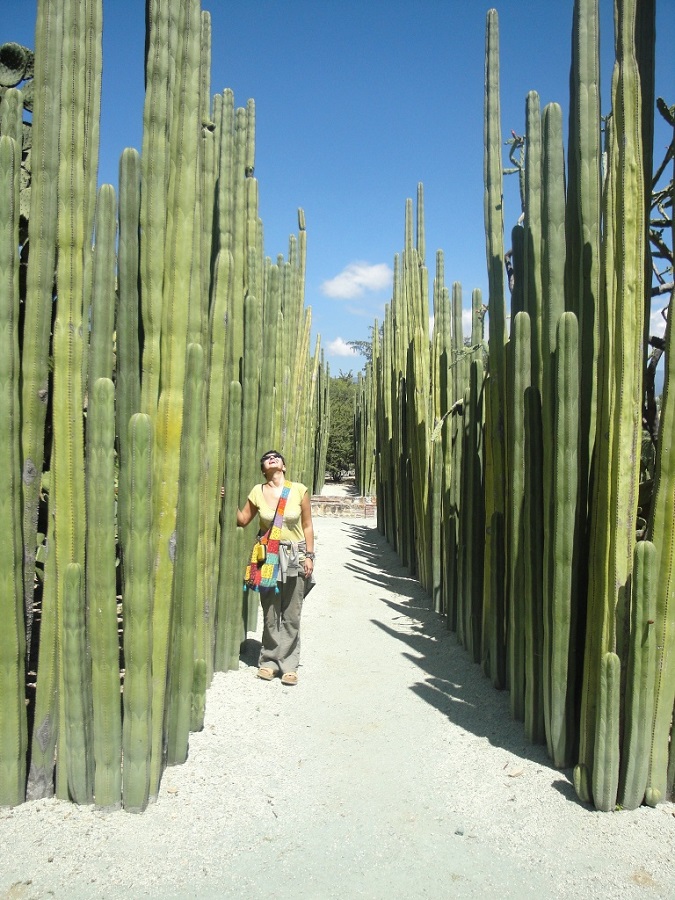Young Croatian Humanitarian Andro Fabijanic Dies in Ukraine
September the 17th, 2022 - Young Croatian Andro Fabijanic, a selfless 29-year-old from Zagreb, who actively helped Ukrainian families and veterans with humanitarian work, died in Ukraine in an anti-tank mine explosion on Tuesday while delivering aid.
Ukrainian suffering caused by the Russian invasion which shockingly took place back in February of this year has been horrendous, but it has shown us just how many selfless individuals from across Europe have been ready to step in and help in any way possible.
The Republic of Croatia, with its relatively recent experience of invasion and bloody war has been praiseworthy in its efforts to help Ukrainian refugees, with the government quickly amending laws to allow refugees to stay and work here, and individuals offering up their homes to displaced Ukrainian families free of charge all over the country. Croatian humanitarian Andro Fabijanic is one such person who left the comfort of his peaceful country to head over to Ukraine to help directly.
As Poslovni Dnevnik writes, the tragic news that Andro had lost his life quickly spread on social media and was later also confirmed by friends of the bereaved Fabijanic family. This altruistic young man from Zagreb, known to local athletes and recreationists as a personal fitness trainer, died in a delivery vehicle transporting sanitary materials to Ukrainian fighters.
The vehicle ran into a mine on the road and several of his Ukrainian colleagues were wounded. Unfortunately, there was no escape for Andro Fabijanic, who was supposed to leave for the safety of Croatia just one day later, writes Novi list.
He had bought a ticket home and otherwise worked for an association from Dnipropetrovsk that delivered bandages and other medical aid to Ukrainian veterans fighting against Russian aggression in their war-torn homeland.
For more on Croatian efforts during the ongoing Ukraine war, make sure to check out our dedicated lifestyle section.
Losinj Gets First Sculpture Dedicated to Wives of Croatian Seamen
September the 17th, 2022 - Losinj has become home to the very first sculpture dedicated to the wives of Croatian seamen, who would be frequently seen down by the shoreline waving goodbye to their men heading off to sea.
As Morski writes, when every vessel set sail from the Port of Losinj for a long journey, it would dock in one of the most beautiful coves there - Cikat bay near the church, where the crew would disembark and pray with their families in the church before parting.
The "ADDIO" sculpture dedicated to the wives of Croatian seamen was created as a symbol of tradition, but also of love and loyalty. The bronze sculpture, which stands at a height of 178 cm, found its place exactly in the same place where Losinj's local wives used to wave goodbye to their sailor husbands many, many years ago. It is dedicated to Marija Stuparic, the wife of Captain Aldebrand Petrina, who waved to him as he sailed off into the distance. "Goodbye, my beloved!" she said into the wind while waving a white handkerchief to the sailing ship that was disappearing over the horizon.
After that, she would return to the small church of the Annunciation of Mary (Annunziata) to pray once more for her husband's eventual safe return. The Initials M.S. on the facolic (handkerchief) belong to her, and she was considered to be a dear woman, the wife of Captain Aldebrand Petrina. During their 32 years of married life, they spent only 13 months together in their home in Losinj. Sailors' wives had to be strong-minded, persistent, patient and ready for anything to occur.
''Our desire was to pay tribute to all the sailors' wives who saw Croatian seamen off on their journeys and waited for their return home in an attractive, modern and somewhat abstract way. The form of a classical sculpture has been retained but with a silhouette, and it is somewhat more airy and unique. The sculpture is life-size, on the back is a motif that used to be found on the headbands of women from Losinj, and which can be seen in our permanent exhibition,'' explained the director of the Losinj Museum, Zrinka Ettinger Starcic.
Academic sculptor and the creator of this new Losinj sculpture, Zvonimira Obad, explained the artistic interpretation of the sculpture.
''This is the shape of a woman and it is layered and lost in space, showing how she is being "carried away by the wind". The idea comes from the symbol of a tradition that is falling into oblivion, all for the purpose of "retaining" the time that has passed and renewing the feeling of belonging. The "Addio" sculpture is a symbol of both love and fidelity,'' according to author Obad.
''In this way, we're helping to preserve another valuable memory of our rich maritime past,'' said the director of the Tourist Board of the Town of Mali Losinj, Dalibor Cvitkovic.
For more, make sure to check out our dedicated lifestyle section.
Popular German TV Chef Johann Lafer Spends Time on Istrian Peninsula
September the 17th, 2022 - Popular German TV chef Johann Lafer has been spending time on the gorgeous Istrian peninsula as it seeks to position itself as one of the most exciting gastronomic destinations in all of Europe.
As Morski writes, one of the most prominent television chefs in the entire German-speaking region, Johann Lafer, recently visited Istria. During his stay, an extensive editorial photo production was carried out, which will be presented on as many as thirteen pages of the prestigious Lafer magazine this month.
At the end of July in Singapore, he created new menus for Singapore Airlines as one of the world's best airlines, which the German television company ARD reported to an audience of millions during a special one-hour show during the primetime evening programme. In August, German TV chef Johann Lafer visited Istria to thoroughly research the area and its rich and varied gastronomic scene.
The star chef, who, among other things, has been awarded multiple Michelin stars, is considered to be among the most respected and highest paid chefs in all of Germany and Austria. His visit to Istria without any fees was arranged by Dr. Wolfgang Neuhuber from ART Redaktionsteam, a public relations agency, a long-time partner of Istria, and the Tourist Board of Istria County.
''Johann Lafer is simply a passionate chef who takes a lot of delight from cooking, wine and other top quality products. Together with the director of the Istria County Tourist Board, Denis Ivosevic, we tried to present all the faces of the gastronomic destination of Istria,'' said Neuhuber.
During the three-day research tour, Johann Lafer got better acquainted with various Istrian specialties, from baking to fine dining and classic wines, as well as typical Istrian delicacies. Of course, there was no shortage of tasting prosciutto, truffles and Istria's well known extra virgin olive oil.
Along with German TV chef Johann Lafer, Patricia Brohm, the longtime editor-in-chief of the prestigious Gault Millau Germany guide, was present, as well as the top photographer from Hamburg, David Maupile, with Dr. Wolfgang Neuhuber working as the presenter. Johann Lafer was delighted with what he discovered and has already booked his next private holiday in Croatia to "get to know even more of this fascinating country''.
What is most important and represents a huge success for Istrian tourism is the extensive cover story about Istria as a gastronomic destination, which is due to be published in the autumn edition of the prestigious Lafer magazine. The magazine belongs to the elite publisher Jahreszeiten-Verlag (Feinschmecker, Merian), and it is estimated that the advertising value of this free reportage for Istria stands at about 230,000 euros, but it will bring inestimable value to the image of Istria and its destinations.
For more, make sure to check out our dedicated travel section.
Rijeka Police Begin Project in Schools Tackling Topics of Addiction
September the 17th, 2022 - The Rijeka police have begun their project ''Zdrav na 5'' (Healthy for 5) in schools in collaboration with the Ministry of Internal Affairs (MUP), the Ministry of Health and others. They will seek to teach children in an age appropriate way about the issues of drug addiction and alcohol abuse.
As Morski writes, the praiseworthy Healthy for 5 project has been created in cooperation with the Ministry of Internal Affairs, the Ministry of Health, the Ministry of Environmental Protection and Energy, and the Ministry of Science and Education in all elementary schools across the Republic of Croatia.
This year's educational lectures from the project "Healthy for 5" intended for eighth grade students began at the Skurinje Elementary School and included Rijeka police officers. The lecture was given by Nives Kajfes Grcko, a police officer from the Primorje-Gorski kotar Police Department.
Through this national project carried out in elementary schools, activities to prevent drug addiction and alcohol abuse among children and youth are being promoted, as are the proper development of socio-emotional skills, the teaching of the responsibility young people have in boosting and preserving their own health, and general safety.
On this occasion, police officer Nives Kajfes Grcko gave lectures for two classes of children, in which she pointed out to students the harmful consequences of alcohol consumption among young people, which not only has a negative effect on their cognitive and psycho-emotional development, but also results in many punishable behaviours that the police often encounter when it comes to young people and drinking alcohol (peer violence, fights, vandalism, traffic accidents).
As part of the implementation of the "Healthy for 5" project, these types of lectures will be held until the end of the school year in other primary schools across Primorje-Gorski kotar County.
For more, make sure to check out our dedicated lifestyle section.
Croatian Returnee Reflections: Ljubica Tomić, from Hong Kong to Istria
September 17, 2022 - Whisper it quietly, but more and more people are relocating to Croatia from the diaspora. In a new TCN series, we meet them to find out how they are faring and what advice they have for others thinking of making the switch. Next up is Ljubica Tomić, who moved from Hong Kong to Istria.
My name is Ljubica, born and raised in Croatia, in the lovely Samobor area. Being a teenager in the 90s in Croatia, I always thought - there must be a less toxic place where people are positive and embrace differences. I put in a lot of effort and grabbed the first possible occasion, which took me to Hong Kong when I was 30 years old. A few years later, I abandoned the profit business and started from scratch in the aid sector, where I spent almost a decade on and off, alternating working and travelling around the world… until 2017, when I decided to abandon a nomadic lifestyle and settle in Croatia, Istria.
1. You made the switch to Croatia. Tell us a little about the decision process and how long it took for you to get on the plane.
In my 30s, I thought I could settle in several places around the world I loved, but after 70+ countries visited and about a dozen I lived in, I figured the Mediterranean is the place to be - weather, food, culture, nature, lifestyle, safety… with family here and Croatian passport in the pocket, picking Croatia made sense.
2. What did your family and community back home think of your decision at the time?
Croatia was still my primary home, and important people were happy I am finally coming back.
3. Where did you get your information about the realities of Croatia prior to coming?
I kept in touch, and I observed progress, which was encouraging.
4. What were you most nervous about making the switch? What was your biggest fear, and what was the reality of what you found?
Growing differences with my existing community in Croatia and, on the other side, a lack of differences (diversity) in Croatian society.
Being away for over a decade, even though I regularly made enormous efforts to meet everybody I could each time briefly visiting Croatia, I knew it would feel different once I am back. Making appointments became more difficult and some of those relationships simply diluted…which was kind of normal and okay, being in my early 40s and becoming aware that all we need is “mali krug, velikih ljudi” (small circle, big people).
On the other hand, I like to meet new, different and interesting people who also travel the world, embrace differences, cherish what they have and grab life by the balls (rather than just whining). The growing expat community is great news, so I managed to connect and make some new friendships.
5. Think back to the time before you arrived. What were your perceptions about Croatia, and how were they different from the reality you encountered?
While I was well aware of possible obstacles, it did disappoint with how severely inefficient Croatian administration and regulations are. I could have easily picked any place on the planet to live in but decided to come back to Croatia. Being in my prime age, educated, experienced, focused, persistent and with money to invest, I struggled for 3 years to kick off my project. A tiny retreat on my one-acre land in Istria was the idea.
Legal and administrative obstacles were insane. One issue was ping pong between the municipality and county, whereby each one says, “go and ask the other one”. No clear statements and guidelines. Another one was that for such a project, I needed to please three different ministries with their regulations while the regulations of each ministry are ambiguous and then contradictory between those three. Loads of meetings and email correspondence with highly ranked officials also didn’t help. Sometimes when I reached a relevant person, I figured this person was stuck in the 80s and had no experience or capacity to do their job.
… This brings us to the next worst obstacle - many (not all) people working in Government offices, besides not being professionally equipped, have a very common (and very wrong) approach - and that is behaving like we are here because of them, and not vice versa. Our notorious “uhljeb” model.
6. You are still here, so obviously, the pros outweigh the cons. Tell us about some of the things that you love about being in Croatia, as well as some of the things you don't like.
I love that I can show up at my neighbour’s door to borrow a few eggs. I love when the staff in the pet shop sits with my dog when I go to grab groceries. I love how we exchange and share goodies in the village. I love that visiting amazing and diverse places across Croatia takes only a few hours of driving. I love the fact that I can leave my house key (in case of emergency) with a neighbour when I travel. I love to host my international friends visiting, who, all without exception, find Croatia amazing. Because it is.
What I don’t like is already mentioned in the article but in general, what hurts most is that we have a country with amazing opportunities, and we just can’t handle all those incredible resources we have. But, I believe in the young generation and am positive they will make changes as soon as old farts step down.
I fully support young people leaving Croatia and seeing the world, getting new skills and opening their minds, but we need to find a way to bring them back. It was easier for me because I was single, but if I had my own family, I'm not sure Croatia would be the final pick…
7. What advice do you have for others thinking about making a move from the diaspora?
Be aware of heavy administration and equip yourself with a lot of patience. As much as you would think that you should be invited and welcomed with your qualities to the country that clearly needs “fresh blood”, there is a massive lack of community benefits perspective. It mostly comes down to individuals and their personal interests. Very sadly, Croatians are known to be very tolerant of corruption, but please, do not support that.
Another one is very common around the world - as most of you would probably come from more developed countries and with some capital to invest, many locals will think that you have an unlimited budget. Do your research before closing the deals. Not only as prevention of getting ripped off but simply because nonchalantly paying more (just because you can) means overall prices inflating, which can badly affect local people with fewer resources.
8. How do you think Croatia can better assist those who are looking to return to the Homeland?
Easier investment opportunities from every perspective. It is abnormal that once you paid the full amount, you need to wait for a HEP electricity connection for ten months, even with regular follow-ups through all possible channels. Cut the heavy administration, which, if done well, should make it more efficient. We don’t need "uhljebs" who actually serve their own purpose while making people’s lives more difficult with their incompetence and unprofessionalism
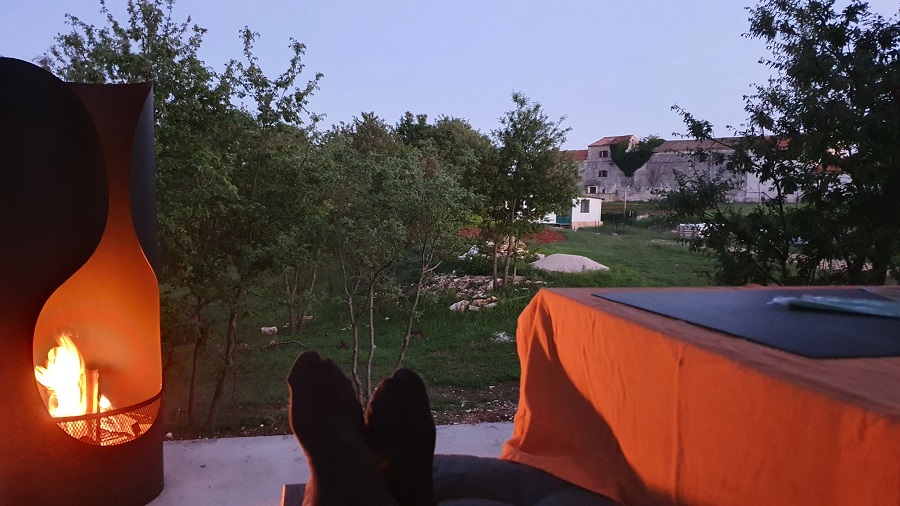
****
Thanks Ljubica!
You can follow more stories in the Croatian Returnee Reflections series in our dedicated TCN section.
Would you like your returnee story - positive or negative - to be featured in this series? Contact paul@total-croatia-news.com Subject Returnee.
****
What is it like to live in Croatia? An expat for 20 years, you can follow my series, 20 Ways Croatia Changed Me in 20 Years, starting at the beginning - Business and Dalmatia.
Follow Paul Bradbury on LinkedIn.
Croatia, a Survival Kit for Foreigners will be out by Christmas. If you would like to reserve a copy, email paul@total-croatia-news.com Subject 20 Years Book
Great Fun in Zagorje: One of World's Safest Flying Machines, Gyrocopter
September 16, 2022 - "Gyrocopter flights are something new, different, exciting and safe for young and old, our future members! We offer everyone to experience all the beauty of the magnificent Croatian landscape from a bird's eye view, enjoying a slow and safe flight that will surely leave you breathless" these are the words of the founders of Aeroklub Gyrocopter Croatia.
As Poslovni writes, the club was founded eight years ago with the aim of expanding this relatively new branch of sports aviation in Croatia, which has a lot of potential for development.
They offer their members introductory flights and training in sports and recreational flying, and at the same time organize multi-day gyrocopter tours, flying from the Krapinsko Zagorski Aerodrom to Zabok Gubaševo.
It sounds like a type of prehistoric giant bird, but in fact the gyrocopter is a type of microlight flying machine that is considered the safest in the world, and is therefore attractive to those who are suspicious of safety, yet eager for adventure.
Croatian regulations also contribute to safety, club members can fly, with a number of safety measures that are standard, explains Nikolina Ćorković, who, along with her husband and pilot Ilija Ćorković, is the owner of the company Dva krila, which imports gyrocopters.
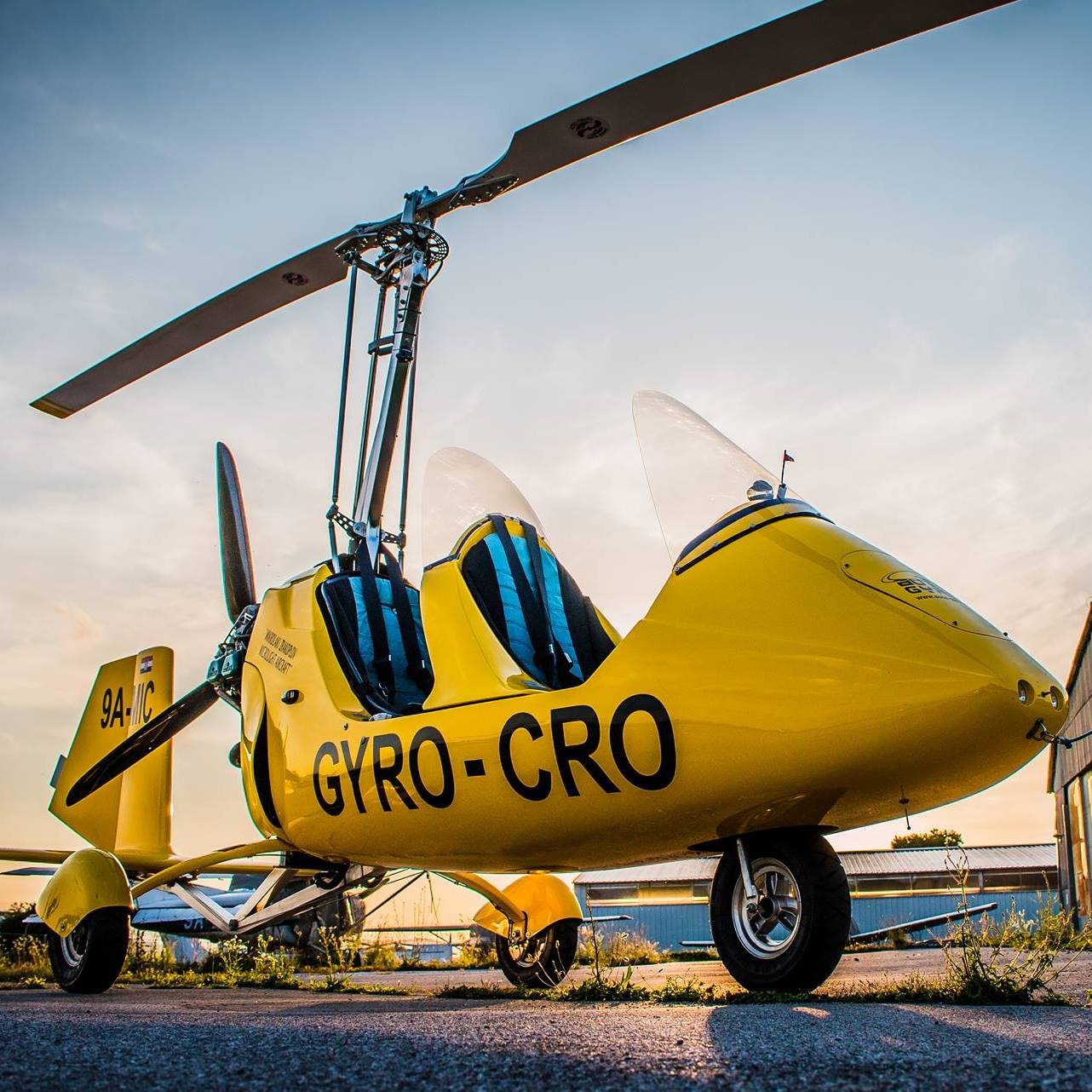
"But we were actually pioneers for these in Croatia, we imported the first gyrocopter in the country and initiated the creation of the Regulations that will regulate these flights. It was not easy, but we are trying to promote this sport, which is very developed in countries such as Poland and the Czech Republic, and to motivate young people to become pilots", says Nikolina Ćorković. The club currently has about 20 members and four budding pilots.
Pilot training includes education that lasts 2 months and a certain number of flights, and exams are taken with the approval of the Civil Aviation Agency. It is interesting that with a passed test and a flying license, anyone can get their own gyrocopter, which costs from 50,000 to 120,000 euros with depending on the equipment, and fly wherever they want.
Ćorković notes that in European countries these have multiple purposes, they are used in both public and private activities, from the coast guard to agriculture, and one Polish entrepreneur even recorded a video of him traveling to a meeting in the city from his farm in the countryside.
The club is very proud because this July they participated for the first time with their gyrocopter in the world championship of microlight flying machines in the Czech Republic, where they won 5th place, and it was a great opportunity to promote Croatia in this sport.
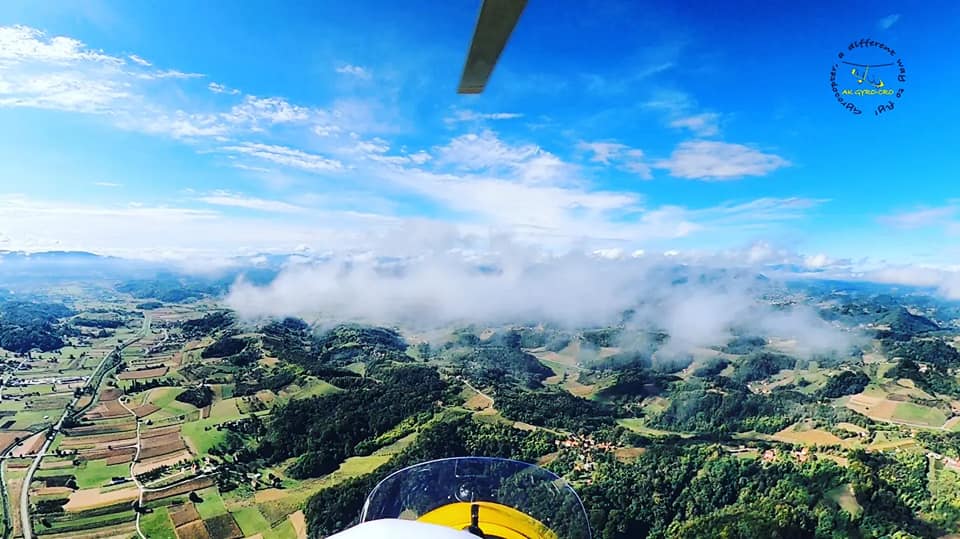
Gyrocopter has an interesting history, and its predecessor was designed in the 1920s by the Spanish aviation designer don Juan da la Cierva, after he lost his best friend in a plane crash. He then vowed to design the safest aircraft in the world, and in 1923 he introduced the Auto Gyro to the world, the predecessor of today's gyrocopter.
It is the only flying machine in the world that cannot enter a stall (breakdown of buoyancy, the most common cause of aviation accidents), and which, in the event of an engine failure, gently floats towards the ground, like a maple seed.
Basically, it functions like its big brother, the helicopter, but the rotor of the gyrocopter while airborne is not driven by an engine like in a helicopter, but by an air current that passes through the rotor blades. The machine gained worldwide attention in the film "Mad Max 2" and in the James Bond film "You Only Live Twice", when Sean Connery maneuvered "Little Nelly" on an Asian island.
Aeroklub emphasises that the gyrocopter is not particularly sensitive to turbulence, because the tips of the rotors move at a speed of 700 km/h through the air and are not bothered by wind gusts of 70 km/h. For this reason, even in difficult weather conditions, it is safe to fly in one.
Gyrocopter is equipped with standard and advanced aviation equipment, radio transmitter, transponder, as well as the latest technological innovations in the field of navigation for monitoring meteorological conditions and air traffic, and is therefore an excellent choice for sports, panoramic and international flights.
Nikolina Ćorković revealed that their Gyrocopter with one fuel tank of 68 liters can fly for three hours, with an average speed of 120 km/h, which is a range of over 400 kilometers. It can be flown by children and the elderly, and the restrictions are a height of at least 140 cm and a maximum weight of a person of 100 kilograms.
On September 24, the Croatian Civil Aviation Agency is organising the aviation event "Let's fly together, let's fly safely" at the Gubaševo-Zabok airport with the aim of promoting the culture of safety in aviation.
The event is intended for users and operators of general aviation as well as students and pupils of educational institutions attending technical courses, in order to get them interested in sports aviation, but also to motivate them to choose aviation professions in their future education.
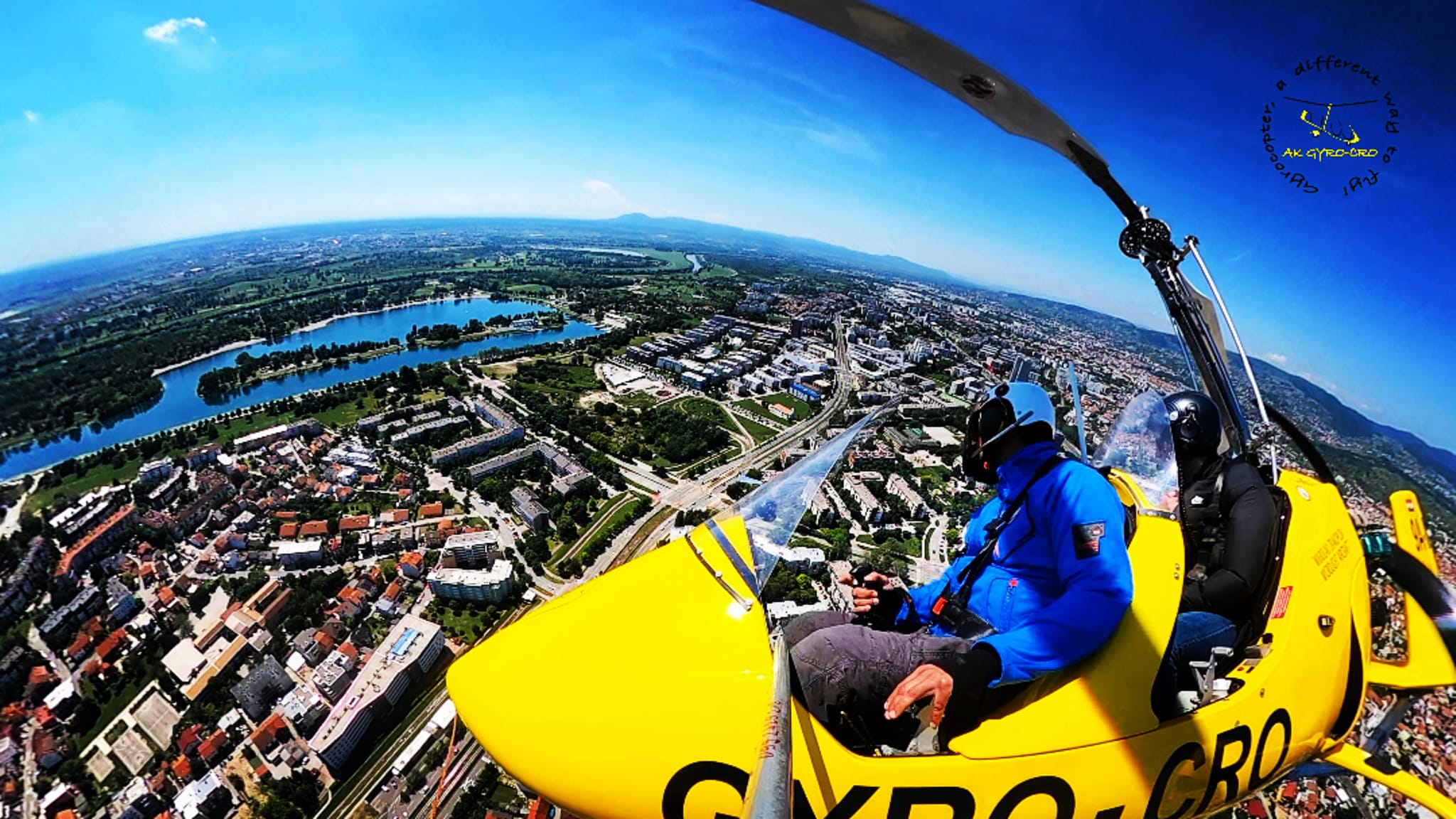
"The event is unique. It is the first time that it is organized by the Croatian Civil Aviation Agency and it is almost certain that it will continue to be held in the coming years, always in different locations. "Let's fly together, let's fly safely" is an interactive, educational and attractive event. It offers the opportunity to participate in a large number of educational workshops in the field of aviation, which will not only be theoretical but also practical in the field, especially when it comes to flight inspections of flying machines. We have also organised quizzes for all those who will attend the workshops, and we will reward the best with appropriate gifts", the Agency announces.
At the same time, organisations for training pilots of airplanes, paragliders, paratroopers, and balloons will be presented to visitors at Gubaševo airport, and visitors will be able to ask about anything they are interested in when it comes to training (conditions, duration, price, permits, etc.). About 30 aircraft will be located at the airport from early morning, and an event of this type would certainly be unthinkable without an airshow and flight program that starts in the afternoon with numerous surprises, the Agency promises.
All photos courtesy of Gyrocopter Hrvatska.
For more, make sure to check out our dedicated Lifestyle section.
Croatian Journalists Association Wants Accountability for Matijanić's Death
September 16, 2022 - The Croatian Journalists Association (HND) yesterday started a petition, demanding a new, independent commission to re-investigate the circumstances around the death of their late member, Vladimir Matijanić.
We have covered this scandal, rattling Croatian society this summer, because of how publicly the details of Matijanić's passing were discussed and how many perceived his death as avoidable. There was a brief investigation by a commission formed by the Minister of Health, Vili Beroš. That commission predictably found that nobody in the healthcare system in Croatia did anything wrong.
Now, the Croatian Journalists Association is calling for another look, by an independent group of experts. The people in the previous commission are reported to be in direct conflict of interest, which makes their findings less legitimate. The Association is asking the Prime Minister to make sure a thorough investigation gets done, including interviewing witnesses. They additionally request that Vili Beroš, the health minister gets removed from the position, because of his embarrassing, scandalous and unacceptable behaviour throughout this situation, but also because of the results of his commission which previously investigated the death of their colleague.
If you want, you can sign the petition here.
There are two things to note here, however: it is extremely bizarre that the association of the nation's journalists, the people whose job and calling it is to ask the questions directly to the people in power, acting in the best interest of the public, feels like the best (only?) way to pressure a Prime Minister is to start a chage.org petition. One of the explanations for that decision could be that they wanted to garner international attention to the Croatia's mistreatment of Matijanić and a failed investigation of his death, in which case it's even more bizarre that there isn't an English translation of the text of the petition, so the international readers (such as yourself) don't really know what exactly they'd be signing!
Croatian Tourist Season Air Traffic Exceeds Pre-Pandemic Year of 2019
September the 16th, 2022 - Croatian tourist season air traffic has reached heights that outdo those we saw back during the record breaking, pre-pandemic year of 2019.
As Poslovni Dnevnik/Marija Crnjak writes, even with numerous difficulties still being faced by airlines, air travel to Southeastern Europe throughout the summer season so far has significantly exceeded pre-pandemic levels. This also includes Croatian tourist season air traffic levels.
Both Turkey and Greece exceeded the levels of arrivals of international visitors they recorded back before the pandemic struck by 9 percent and 2 percent respectively, and of the capital cities, Istanbul had the strongest growth of 2 percent compared to 2019, according to an analysis by ForwardKeys.
Most guests are from Germany
The number of arrivals to nearby Albania has also increased by as much as 28 percent, although it only accounts for 1 percent of the market share in all European air arrivals. All other countries are still in the red compared to the pre-pandemic summer of 2019, and neighbouring Slovenia has seen the smallest drop of a mere 7 percent compared to the pre-pandemic period, followed by Iceland with a drop of 8 percent, and Portugal, which lags behind by 10 percent.
According to the latest published data published by the Croatian Statistical Institute, the number of air passenger arrivals to Croatia fell by 11 percent in July alone.
In the period from January to July this year, 5.1 million passengers were recorded as having passed through Croatian airports, equal to 81 percent of the country's pre-pandemic traffic, with the largest number of passengers in the first seven months of 2022 being recorded from Germany, followed by the United Kingdom and then France.
In July this year, the highest level of Croatian tourist season air traffic was achieved by Split Airport, followed by Dubrovnik Airport and then Zagreb Airport. The most significant amount of international passenger traffic was achieved with British airports, which accounts for almost seven times more than last year, when the restrictions due to the coronavirus pandemic were in effect.
When it comes to European cities, Athens had 7 percent less arrivals by plane in July and August than it did back in 2019, Reykjavik and Porto saw drops of 8 percent, and Malaga saw a considerable drop of 13 percent.
The main drivers of air traffic growth for Turkey are the constant decline in the value of the Turkish lira and its openness to the Russian market, from where direct flights to most of Europe are prohibited.
Departures within Europe were 22 percent lower
European destinations could have attracted more visitors during the summer months this year if the airline industry had coped better with the surge in travel demand during the late spring and early summer. If there had been no disruption, ForwardKeys estimates that the recovery of flight reservations within Europe would have been five percentage points higher. An analysis of departure markets reveals that within Europe, Greece has proven to be the most resilient, with departures to European destinations in July and August at 2019's impressive levels.
Poland saw a minus of 9 percent compared to 2019, Spain saw a drop of 12 percent, the UK saw one of 13 percent, Denmark saw a drop of 14 percent and Portugal had a drop of 15 percent. In total, departures within Europe were reduced by 22 percent. The strongest non-European market was the USA, with only a 5 percent drop compared to 2019. It was followed by Colombia and Israel, both with 9 percent.
The outlook for the next three months is optimistic, despite the still unstable circumstances. As of August the 31st, there were 21 percent less flight reservations when compared to the same period back in 2019, and the exceptions were once again Greece and Turkey, which both enjoyed a higher number of reservations than they did back in 2019, of 5 percent and 20 percent, respectively.
For more, make sure to check out our dedicated travel section.
Montenegrin Admiral Vladimir Barovic Gets Memorial Plaque on Vis
September the 16th, 2022 - Montenegrin Admiral Vladimir Barovic has had a memorial plaque dedicated to him on the island of Vis. The admiral famously refused to take aim at or do any harm to Dalmatia, taking his own life instead.
As Morski writes, a memorial plaque to Montenegrin Admiral Vladimir Barovic was unveiled in Samogor on the island of Vis this past week. The unveiling of the memorial plaque was attended by the Ministers of Foreign Affairs of both Croatia and neighbouring Montenegro, Gordan Grlic Radman and Ranko Krivokapic, the Ministers of Defense of the two countries, Mario Banozic and Rasko Konjevic, and the Mayor of Vis, Ivo Radica.
In his address, Minister Gordan Grlic Radman emphasised the importance of nurturing the culture of memory, noting that the installation of the memorial plaque on Vis is a continuation of last year's commemoration of the suffering of Croatian nationals imprisoned in the infamous Morinj camp.
"Vladimir Barovic's act of humanity and his show of staunch disagreement with evil is a symbol of those values that today, just as they were thirty years ago, are a pledge of relations based on mutual respect. He was deeply aware that the army of which he was the commander wouldn't be the one he could serve honourably, because its intentions were dishonourable, occupational in their nature, not to mention criminal. That September, he fired only one bullet and that was unfortunately the only possible way he could get out of the hellish plan of aggression of the Yugoslav People's Army (JNA) against the Republic of Croatia," he stated.
''His words written on the plaque that we've unveiled open up many questions within us, and they question the fundamental principles that we should all cherish towards each other, nation to nation, human to human. We feel the obligation and duty right here on the island of Vis to set up a memorial plaque to him as a thank you to him and as a memory, but also to showcase the fact that even during the most difficult times dominated by war, one man put his honour before his command and proved he'd sooner take his own life than destroy Dalmatian cities and the Croatian people,'' added Minister Grlic Radman of Montenegrin Admiral Vladimir Barovic's actions.
He concluded the presentation by pointing out that the Republic of Croatia and Montenegro will continue to work on and strengthen their good-neighbourly relations and work on open issues they both have, and that Montenegro will continue to enjoy the firm and friendly hand of support of Croatia on its European Union path.
Minister of Defense Mario Banozic also pointed out that after more than three decades, we now have the opportunity to mark a moment in history that is important for all of us.
''The act carried out by Admiral Barovic represented a big step in the relations between our countries, as well as in the relations between the navies of the Republic of Croatia and of Montenegro, which, through cooperation in the field of education at the Dr. Franjo Tudjman Croatian Military Academy, they learn and strengthen themselves not with the aim of war, but with the aim of deterrence. This was also done by Admiral Barovic, thanks to whom the ugly scenes that people in other parts of Croatia experienced during the Homeland War were averted in the area of Vis,'' Banozic pointed out, adding that with this memorial plaque, we convey to future generations what Admiral Barovic and his actions meant to Croatia.
For more, make sure to check out our dedicated lifestyle section.
Many Polish Tourists Return Home with Rescued Croatian Street Cats
September the 16th, 2022 - Many Polish visitors to this country's coastline are heading home not with just a magnet, keyring or 'I Love Croatia' shirt, but with Croatian street cats they have adopted and decided to give forever homes to.
As Morski writes, it seems that while some find it impossible to resist purchasing a 'Hrvatska' mug that will struggle to survive the dishwasher, others can't get enough of the cats. Many people can't ignore a hungry street cat's sad eyes, so they return home with transporters containing cats from Dalmatia and Istria. This is especially the case with Polish tourists.
Polish national Katarzyna is one such cat foster parent. She contacted the Facebook group Chorwacja (Croatia) and asked for advice from other Poles who had come to Croatia during summer. Although many in that group exchange advice and experiences about different cities, towns and localities that should be visited, this girl asked a question about transporting rescued Croatian street cats. During the two weeks she spent here, one fluffy, four-legged and wide-eyed cat kept her company, and Katazyna decided she couldn't leave her, and that they'd return home to Poland together.
On Facebook, she received about 200 comments with instructions from other Polish nationals, who have experience with transporting their own or "new" animals they have acquired. In the European Union, you can travel with your pets without any particular difficulties. It's usually enough that the animal has a passport, which means that a veterinarian has microchipped the animal. Others shared their experiences.
''I was driving home with three little kittens. The vet gave us passports, he couldn't microchip them because they were too small, and it was too early for any vaccines. I just treated them against fleas and other parasites and that was it. Nobody checked them at the border anyway,'' wrote Kamila.
However, there are also some people who faced stricter controls when arriving at the border.
''They checked the dog's passport when we entered Croatia and again when we left it. On the way back, our dog barked at the policeman and he found it funny,'' Anna wrote.
In addition to a series of advice and support, Katazyna also heard a series of conflicting opinions. While some think that Croatian street cats are happy and at home where they are, which veterinarians and animal lovers claim is absolutely not the case, others agree that they need our help and to be given proper treatment, food and homes.
Polish society is slowly but surely changing. More and more people support shelters for abandoned animals and get their pets from there. They often organise various actions and pay large sums of money to help shelters and animals, and many are pet owners and animal lovers. Moreover, the OLX website, which is a bit like the Polish version of Croatia's much loved Njuskalo, organises a campaign to feed animals living in shelters. They place pictures of the dogs and cats instead of some items for sale, and every day one click enables the delivery of food for certain animals, writes Jutarnji list.
For more, make sure to check out our dedicated lifestyle section.


